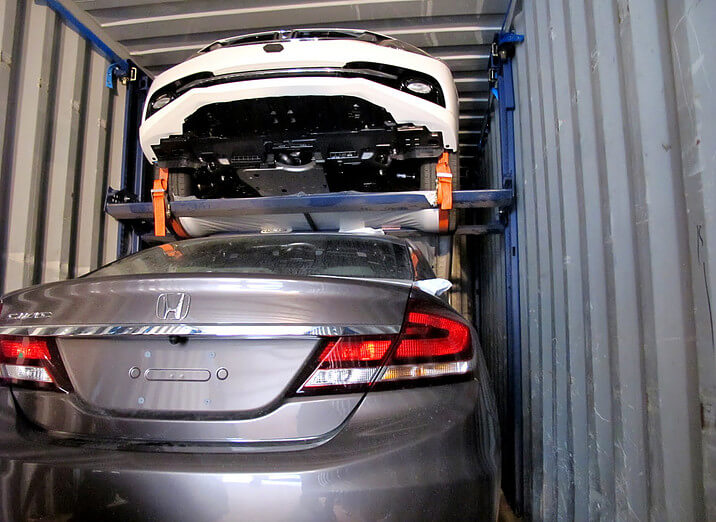
There is a reason that we do not drive along the road and pass a car transporter constructed from wood. It is therefore one of life’s great curiosities that wood remains the primary material used for constructing vehicle frames inside containers. Today, we take a look at the mechanical and chemical properties of steel and wood, and explore their use in container vehicle transport.
Why Use Wood?
Traditionally, wood has often been used for container shelving. There are many reasons for this. Wood can easily be cut to the desired length, which increases the efficiency of packing. Wood is also an excellent energy absorber. It has a similar structural formation to the type of closed cell foam that is found in motorbike helmets, and in a violent sea this can absorb shock and protect products.
However, there are many drawbacks. Firstly, the majority of wooden racks are single use. Highly unsustainable, disposable racking is also costly. Secondly, the type of wood used in container transport is not strong enough to support a raised vehicle. This limits the container capacity to two cars, which increases the cost yet further. As such, the automotive industry is almost exclusively reliant upon RORO ferries, and all of the headaches that they generate.
What Can Steel Offer?
There are many reasons why steel is an ideal material for transporting vehicles. These are due to its mechanical and chemical properties. Steel is lightweight, yet extremely strong, meaning that double layers of car transportation are available. This instantly doubles container capacity from 2 cars to 4, or even 6 small cars in 45 ft containers. The economics of this are straightforward.
Steel also has important mechanical properties. The material itself is not particularly difficult to make: it’s a simple alloy of iron and carbon, with the carbon atoms neutralising the iron and therefore both strengthening the metal and rendering it unreactive with water or oxygen. The result is that it has superlative corrosion resistance, meaning that it is impervious to the hazards that may be thrown at it: water, mud, fuel, and salt. In terms of safety, it is almost unparalleled as an energy absorber, to the point that it is now the go-to material of choice for passenger vehicles such as buses. Steel is therefore a good match for the job description.
Perhaps most importantly, however, steel is cost effective. Aside from extending the capacity of containers, this anti-corrosive property means that steel can be used ad infinitum. This is something that Trans-Rak systems have planned for, and up to 60 racks can be easily returned to their point of origin in a single container. This not only reduces the cost, but significantly increases environmental sustainability. Around 20% of steel usually comes from recycled material, and steel itself is endlessly recyclable, making it one of the most ecologically and economically friendly metals available.
Making The Change
A natural material, wood has many excellent properties. However, these are best applied to coffee tables, wardrobes, and log cabins. A tweak of science has meant that metals such as steel are ideal for use when transporting heavy, valuable objects. Safe, strong, re-usable, non-corrosive, energy-absorbing, eco-friendly, and economically sensible, steel racks look set to transform the transport industry. After all, it’s about time that shipping caught up with what road transport has known for a long time.














